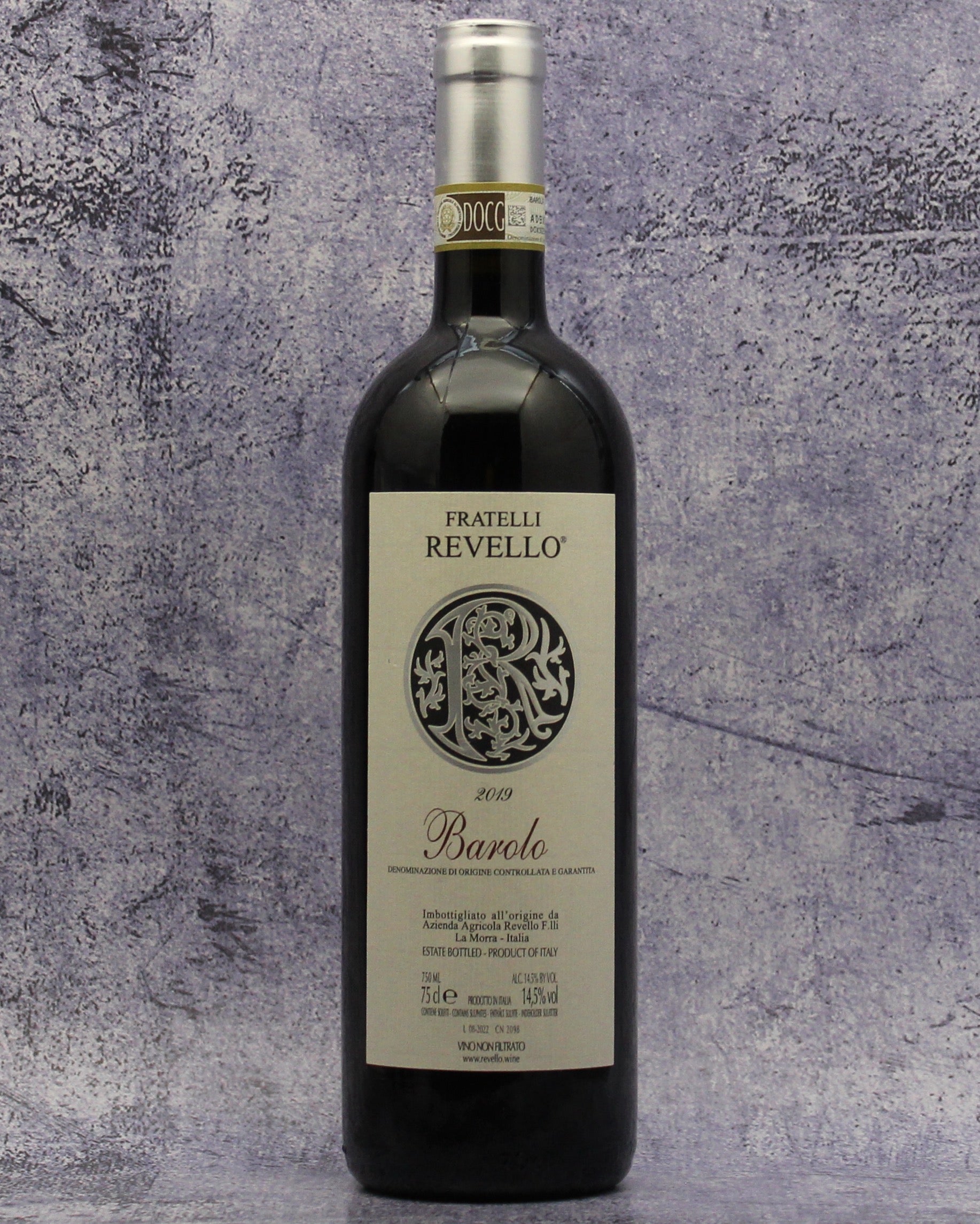From: La Morra, Piemonte, Italy
Varietal: Nebbiolo
Taste & Critical Acclaim: “Notes of fresh cherries, dried lavender, gunpowder and crushed stones. Medium-bodied, vivid and crunchy with a compact and viscous tannin structure. Yet it’s polished and refined with floral and mineral undertones in the finish.” - 93 Points, James Suckling
"A sleek red, with cherry, menthol, juniper, mineral, tar and tobacco flavors riding the vibrant structure. Balanced, with refined tannins lingering with fruit and underbrush elements on the finish. Best from 2026 through 2040. 1,600 cases made, 480 cases imported.” - 91 points, Wine Spectator 04/03/2024
Pairing: The grippy tannins of Barolo wines call for dishes with enough fat or protein to provide balance. Look for meats, creamy sauces, and aged cheeses. The wine’s lively acidity pairs well with foods with a bit of acidity, like tomatoes, vinegar-based sauces, or citrus. Remember, Barolo’s complexity and intensity require equally flavorful dishes that can stand up to its structure. We love pairing Barolo’s with classic Piedmontese cuisine - things like Risotto al Barolo - A classic Piedmontese dish made with Barolo wine, butter, and Parmigiano-Reggiano cheese. Or Tajarin with white truffles, local pasta served with butter and white truffles, emphasizing the wine’s earthy undertones.
And Osso Buco Braised veal shanks in a tomato-based sauce, perfect for complementing the wine’s rich tannins and acidity.
Beef Short-Rib Adobo
Recipe from Amy Besa and Romy Dorotan
Adapted by Nick Fox
Technical Details
- Nebbiolo from La Morra (Gattera, Conca, Bricco Manescotto, Annunziata), Serralunga d’Alba (Cerretta, Teodoro), and Diano d’Alba (Sorano)
- Vineyards are composed of calcareous clay soils, 250-300 meters above sea level with a 20-60% slope gradient
- Fermentation with indigenous yeasts, 6-8 days maceration in roto-fermentor and 10-15 days completion of fermentation in stainless steel
- Aged in French oak barriques (20% new, 80% used) for 24 months, followed by 9 months in the bottle
- 1,600 cases produced annually
About. Located in La Morra, in the heart of the world-renowned Barolo wine region of Piedmont, Italy, Fratelli Revello is a distinguished family-owned winery celebrated for its exceptional wines. Fratelli Revello began in the 1950s when Giovanni Revello, an ambitious farmer, first worked the land with his wife, Maria. Initially focusing on cultivating crops and rearing cattle, the family gradually shifted towards viticulture, recognizing the exceptional potential of the local terroir. By the 1960s, the family had planted their first vineyards and begun crafting wines for local consumption.
The next significant milestone arrived in the 1980s when Giovanni's sons, Enzo and Carlo, took over the estate. Inspired by their passion for wine and their father's legacy, they decided to focus exclusively on viticulture. They rebranded the winery as "Fratelli Revello" and began producing high-quality wines.
Their commitment to excellence soon garnered international attention. In the 1990s, the brothers modernized their winemaking approach by adopting advanced techniques while respecting their heritage and traditional methods. This fusion of old and new elevated Fratelli Revello's wines, earning them critical acclaim and securing their position among the elite wineries in Barolo.
Fratelli Revello continues to thrive today under the stewardship of Enzo and Carlo's children, Simone and Ellena Revello. The estate is spread over 14 hectares, primarily in La Morra, and includes renowned crus like Gattera, Conca, Giachini, and Rocche dell’Annunziata. Simone Revello has taken charge of the winemaking, combining the wisdom passed down by his father with innovative techniques to produce wines of exceptional quality. Simone emphasizes careful vineyard management, selective harvesting, and minimal use of chemicals. Meanwhile, Ellena Revello oversees marketing and sales, ensuring that Fratelli Revello's wines reach a global audience.
The Barolo DOCG is a prestigious wine appellation in the Piedmont region of northwest Italy, renowned for producing some of the world's finest and most sought-after red wines. This designation exclusively employs the Nebbiolo grape, known for its complexity and aging potential. To earn the Barolo label, wines must undergo a minimum aging period of 38 months, including 18 months in wooden barrels. Meanwhile, Barolo Riserva requires a minimum of 62 months of aging, with at least 18 months in wood. Barolo wines are full-bodied, tannic, and high in acidity, featuring aromas of rose petals, tar, cherry, truffle, and licorice, complemented by layers of spices, herbs, and leather that evolve.
The distinctive terroir of the Barolo DOCG zone plays a crucial role in shaping the character of these remarkable wines. This area comprises 11 communes, with La Morra, Barolo, Monforte d'Alba, Serralunga d'Alba, and Castiglione Falletto being the most prominent. The soil composition varies between communes, influencing the style of wines produced. Tortonian soils, primarily found in La Morra and Barolo, are rich in marl (a mix of clay and limestone), yielding softer and more approachable wines with floral and fruity notes. In contrast, the Helvetian soils of Serralunga d'Alba and Monforte d'Alba, composed of sandstone and limestone, produce more structured and tannic wines with earthy, spicy flavors.
The region's continental climate, characterized by hot summers and cold winters, with significant diurnal temperature variations, aids in ripening and preserves the grapes' natural acidity. The autumn fog, known locally as "nebbia," is common and lends its name to the Nebbiolo grape variety.

